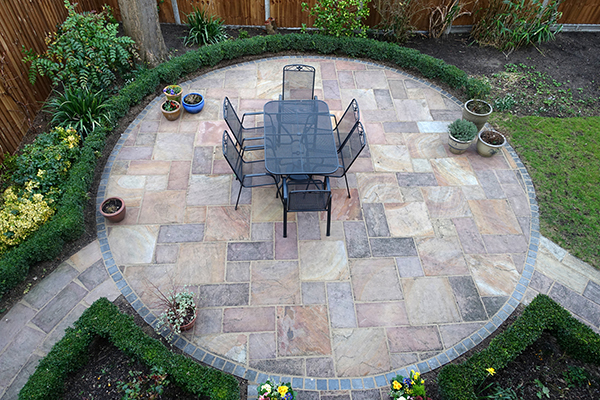Outdoor Health and Safety – Introduction
As the nights draw in and winter approaches, this is a busy time for maintenance works. Most care homes have a garden area giving both inside and outside of the home that homely feel. Some residents enjoy getting air and enjoying the scenery, it’s also good for their wellbeing. Lower light levels and wet patio surfaces outside can make it particularly hazardous and care needs to be exercised to avoid the general slips, trips and falls. The general weather condition is a factor which cannot be overlooked, particularly wet surfaces, icy conditions and strong winds. Within the health and social care sector, there is also the need to consider vulnerable residents ensuring they are kept safe from the activities outside.
What Hazards are There in there outside?
The most effective way of keeping people safe in your care home is ensuring any external work activity is fenced off and that staff are aware of areas which residents need to avoid.
The hazards range from activities like:
- Cutting bushes back or removing branches from overgrown trees
- Moss on patios which present a slip hazard
- Leaves falling off the trees which, when they get wet, are slippy
- Damage caused by high winds to garden sheds and outbuildings, i.e.: loose timber, guttering, broken glass or even asbestos tiles which have come off a garage roof
- Slates and tiles off the home’s roof, broken guttering and leaks
- Movement in patio tiles making them uneven and puddles forming from rain
- Potential flooding
- Snow and icy conditions – remember to have supplies of grit and a shovel
- Electric cables from power equipment or petrol and oil from mowers, strimmers, etc.
How do I Manage These Hazards?
Whilst you cannot eliminate all risks you can manage them effectively through having all activities risk assessed along with safe working practices. A risk assessment considers many factors as defined by the HSE known as the 5 steps:
- Identify the hazards[1]
- Decide who might be harmed and how[2]
- Evaluate the risks and decide on precautions[3]
- Record your significant findings[4]
- Review your assessment and update if necessary
Part of the process in managing risks is identifying if the work can be done more safely. As said earlier, putting barriers around the affected areas will protect residents from wandering into unsafe areas and protect workers from residents entering an unsafe or dangerous area.
As a general rule, risk assessments, once formulated, just need to be reviewed periodically unless something significant occurs, ie: an accident, incident or several near misses which would prompt a need to re-evaluate the current assessment. A general guide would be to review risk assessments every 2 years if nothing significant has changed.
Don’t Forget Training
Remember that part of having a safe environment is ensuring that maintenance staff are fully trained and competent in their work or, where outside contractors are sourced, they are competent in the area requiring attention as well as understanding the safety of vulnerable adults. With contractors, the pre-contractor questionnaire should provide all the documents to assess competence and cover.
Are There Any Practical Steps That Can be Taken?
There are a few simple steps which will help both workers to operate safely and residents to be protected from harm by outside activities:
- Do not operate electrical equipment if it is raining and when equipment is used, always plug to an RCD – this will cut out if there is an overload thus limiting the risk of electrocution
- Avoid using ladders in high winds, ensure when you use them they are on level ground and secured, either by an outrigger or have an anchor person at the bottom of the ladder to keep it secure
- Never work at height – lone working
- Secure unsafe areas where work is being carried out with fencing, barriers, i.e. Chapter 8 fencing and signage to say, “NO UNAUTHORISED ACCESS”.
- Ensure any wires do not present a trip hazard
- Leaf blowers should always be directed away from paths and people
- When cutting tree branches allow enough room from them to fall, always wear a hard hat (EN 397) with a safety visor or safety glasses (EN 166F), gloves, etc. Where a chainsaw is used, operatives must be trained in its correct use, additionally wear ear protection – ensure that work is carried out in good light and with minimal disturbance to residents and for a short duration only
- Never leave any equipment unattended even for a short break
- Chemicals must be kept safe and away from harm to residents or visitors
- Grit buckets must be kept topped up and available when snow falls or paths become icy. There should be a gritting policy in place. Remember residents are prone to falls which can be fatal in cold icy conditions both from the injury of the fall and hyperthermia from the cold
- Asbestos is fatal – never handle, secure the area and call a licenced contractor immediately for advice. (A current UKATA asbestos awareness course does not qualify you to handle asbestos, it just makes you aware of the dangers and how to report)
- Use approved gloves (EN 388 cut level 4 or 5) to pick up broken glass and dispose of responsibly (not general waste)
What Does the Law Say?
The general duties of the Health and Safety at Work Act 1974 section 2 and 3 apply, and in summary include:
- Ensure the safety of all staff, residents and visitors – as far as isreasonably practicable
- Safe Plant and Equipment
- Safe handling, storage and transporting of articles and substances
- Provision of information, instruction, training and supervision
- Safe access and egress
- Safe working environment and welfare facilities
- Employer to ensure the environment is safe – as far as is reasonably practicable, for those not in the employer’s employment who may be affected by risks to their health and safety.
Summary
- Managers need to ensure that activities outside the home are completed safely without harming either the worker or those affected by the worker’s action
- All work should be risk assessed and control measures put in place for high-risk activities
- Unsafe areas or areas where work is being carried out should be fenced off
- Weather conditions should be a consideration prior to undertaking any outside activity, thus if the weather is dangerous for the activity, it must not be done or stopped until safe to continue
References:
- Risk -Controlling the risks in the workplace (HSE) http://www.hse.gov.uk/risk/controlling-risks.htm
- A brief guide to controlling risks in the workplace (INDG 163) http://www.hse.gov.uk/pubns/indg163.pdf







